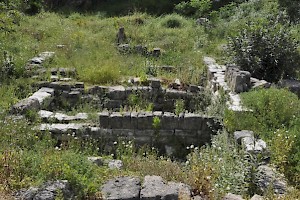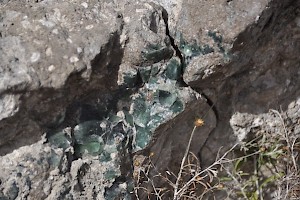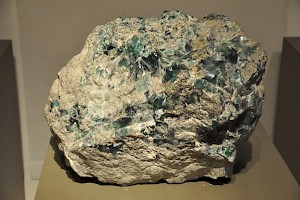Tyre, city, Glass Makers' Quarter
Tyre (Phoenician צר, ṣūr, "rock"; Greek Τύρος; Latin Tyrus): port in Phoenicia and one of the main cities in the eastern Mediterranean.

Glass is a mixture of silica, which can be found in ordinary sand, and soda, which can be extracted from plants. The latter ingredient is added to lower the melting point of the silica from 2000° C to 1200° C. Because it also makes the glass soluble, glass makers also add calcium oxide (from lime or shells), which makes the glass harder again and is why we can drink water from a glass. The natural color of glass is greenish, but impure ingredients can make it blueish or yellowish. Adding lead oxide makes the glass more reflecting, so that it can be used in mirrors and lenses.

Glass was invented in the Early Bronze Age in Egypt and Mesopotamia, probably as a by-product of the production of fayence. The first real vessels were made in Eighteenth Dynasty Egypt, where the glass makers also learned to produce colored glass by adding metal oxides.
Later, Phoenician towns like Sidon and Tyre started to produce glass, and the glass makers discovered that they could make glass more transparent by adding antimony. In the first century BCE, the Phoenicians also invented the blow pipe, which made it easier to operate the furnaces. Glass now became cheaper and started to replace Samian ware as the most important luxury ceramics.

In Tyre, several furnaces can still be seen. Here, a mixture of sand silt from the beach and the other ingredients was fired, until it had become a liquid. After it had cooled down, the mass of raw glass could be cut and prepared for the next stage of production. It comes as a surprise to find this industrial zone next to the City Baths and Mosaic Road.
In their present form, the furnaces date to Late Antiquity, but there must have been furnaces on this place as early as the fourth century BCE. When Alexander the Great attacked Tyre near the Egyptian Harbor, the defenders scattered red hot sand over the Macedonian soldiers, which they must have heated over here.note